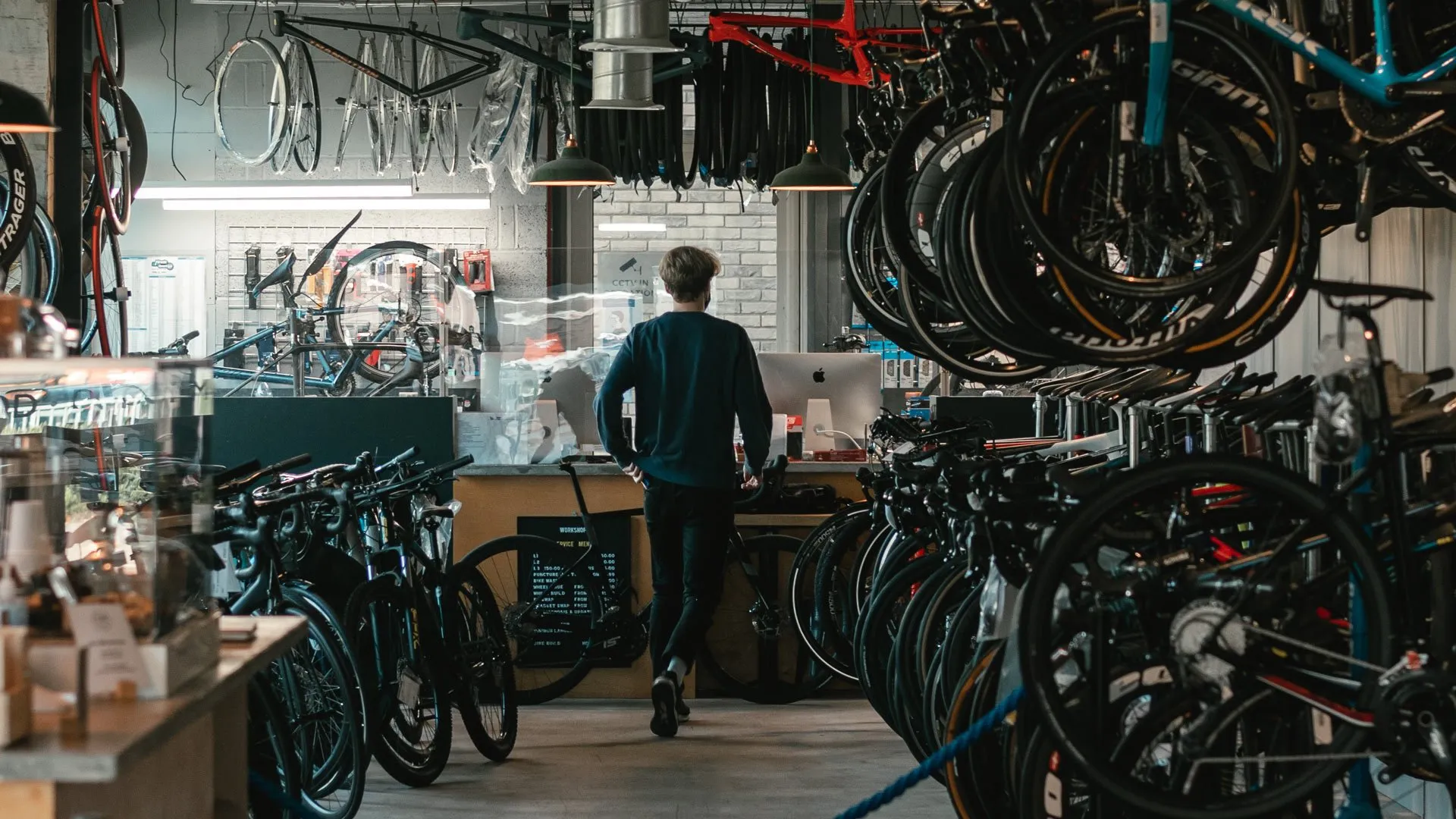Build it, and they will come.
This approach may have worked back in the day; however, it is not a solid strategy for online success; far from it. An estimated 1.88-billion websites are live today, with just under 60 per cent of the world’s population active on the internet. So, how do you build a site and cut through the clutter to get your slice of traffic, too?
BikeExchange drives traffic to your site.
As you will read, you can drive traffic to your site in many ways. Some are cost-effective. Others can end up feeling like you’re pouring good money after bad. Some can result in instant success. Others require a slow-burn, marathon approach.
All of them require time, trial and effort.
Joining a marketplace is one way to cut to the chase and open your virtual doors to traffic. BikeExchange, the world’s largest online marketplace for everything bike, generates more than 60 million bike-skewed product searches… Our 15-year+ platform has amassed exceptional online legacy and legitimacy, maintained through a dedicated marketing strategy that continues to drive month-on-month growth.
We built it, and they’ve been coming ever since, so reach out to us and learn more.
Meantime, aside from this low-hanging fruit, let’s also look at other means of bringing traffic to your site.
What online traffic channels exist?
Direct traffic
As the name suggests, direct traffic represents those who come straight to your site without visiting another site. Unless your name is Beyonce, you’ve somehow, somewhere, done some work for this to happen because the user knows you and has a specific intent to visit. Reasons might include:
- Word-of-mouth – people talk about your store and create desire/ interest/ intrigue.
- Advertising – we talk about paid traffic and advertising below. But in this instance, we mean advertising like a local radio or newspaper ad (so offline).
- Reputation – you’re already established offline, and a portion of the market knows to visit you.
Pros
- There is no direct cost for direct traffic.
Cons
- Again, unless your name is Beyonce, you can’t expect your site to succeed only from direct traffic. You’ll need to create a special sauce from the mix below.
Organic traffic
Have you heard the term SEO or Search Engine Optimisation?
Geared specifically around generating organic traffic, it’s important to note that organic traffic per se is free. However, you still require an investment for someone to do the work in the first place. Organic traffic refers to visitors who come to you after finding you in search results. For example, someone may have entered a search for ‘BMC SLR for sale in Munich’. The results, known as SERPs (Search Engine Results Pages), appear, your store is placed organically (so not shown as an ad) in the listings, and the user clicks through to your site.
Once upon a time, this was a reasonably easy way to build traffic and a straightforward way for web owners to manipulate it to their advantage. Those days are long gone. More and more people are aware of the value of SEO, and the competition is incredibly skilled and diligent. Equally, powerful search engines such as Google are awake to ‘black hat’ operations, which historically manipulated the system.
Organic traffic relies on many SEO practices that warrant another article in its own right. At its most simplified, these include:
- Backlinks.
- Keyword mapping.
- Use of quality video and imagery.
- Demonstration of EAT (expertise, authority and trust).
Pros
- There is no direct cost for organic traffic.
- Organic traffic is potent in terms of its potential quantity and quality.
Cons
- To work on your SEO there is a cost in paying for someone (who knows what they are doing) to work on your SEO.
- This is a slow-burn initiative. Results don’t happen overnight, and it can take several months before you start to see the fruits of your labour.
- It requires constant monitoring and amending depending on changes in search terms, algorithm updates etc.
Paid traffic (PPC)
Pay Per Click, or PPC, is used for advertising to appear in search results.
This involves you bidding for keywords that are going to produce search results. Essentially, you pay every time someone sees your ad in their search results and clicks through. So, in the example we used earlier, you might be paying to appear in search results for ‘BMC SLR for sale in Melbourne’. It’s worth stating that you would not pay for this if you are already ranking well organically.
Pros
- More immediate results than SEO/organic.
- More or less impervious to the algorithm updates that might wreak havoc on organic.
- Can deliver high traffic (but the quality of the traffic is a separate matter).
Cons
- There is a spend involved, which depends on the going rate at the time – the more competition, the more you need to spend to bid above the competition.
- This also involves constant reviewing and adjusting to remain relevant and ahead of the pack.
Referral traffic
This traffic arrives at your site from another source, such as a link or a third-party call to action.
Fair to say that this concept can borrow from other channels mentioned – backlinks and social media; these could be a form of referral traffic. If you strip this back and consider it at its most basic, referral traffic is anything that might come to your site from anywhere other than a significant search engine.
So – how do you generate referral traffic? This can come your way through a variety of sources, including:
- Publishing your site on online directories.
- Get involved in online forums or third-party social media accounts (and create links to your site).
- Having your site published on review platforms.
Pros
- Typically provides a positive SEO spin-off.
- Traffic comes from like-minded sites, thus reassuring visitors about your site’s legitimacy and relevance.
Cons
- Avoid dubious operators that engage in black-hat backlinks – this is a major no-no as it violates search engine conditions.
- Some referral traffic can be spam, so watching your analytics is essential. Any numbers that look like real outliers or too good to be true probably are.
Social media traffic
Social media traffic refers to the usual suspects, such as YouTube, Facebook, Instagram, TikTok, LinkedIn, Pinterest, etc.
This may come from your store’s accounts or accounts belonging to third parties. You may be successful in driving organic social media traffic to your site. Alternatively, you may pay to boost organic posts or run social media ads.
Pros
- Social media traffic from third parties can provide not only visitors but endorsements for your business.
- Cost-effective – aside from the time spent creating posts, this can be a cost-free activity (for organic social media traffic).
Cons
- You need to invest plenty of time in building your social media platform presence and maintaining it.
Email traffic
This refers to traffic driven to your site by an email newsletter to your database.
Don’t make the mistake of believing this is an old-fashioned channel for generating site visits – it remains one of the most effective means of driving traffic, as we outlined in a previous article.
Pros
- It brings traffic but also helps build a community/ tribe.
- The execution is 100% in your control. Bi
- Once you have a template set up, it should be a case of drag-and-drop, making it a fast and easy process.
- Costs are relatively low.
Cons
- Requires commitment – and sometimes a spend – to grow the database.
- It needs AB testing to find the sweet spot.
Bring traffic to your site – join the BikeExchange marketplace.
If you’ve read this and your mind is spinning, contact our team at BikeExchange. Joining our marketplace gives you instant access to tens of thousands of legitimate visitors and access to our expertise. We know how to drive traffic to your site, and we’d be delighted to share our insights with you.



